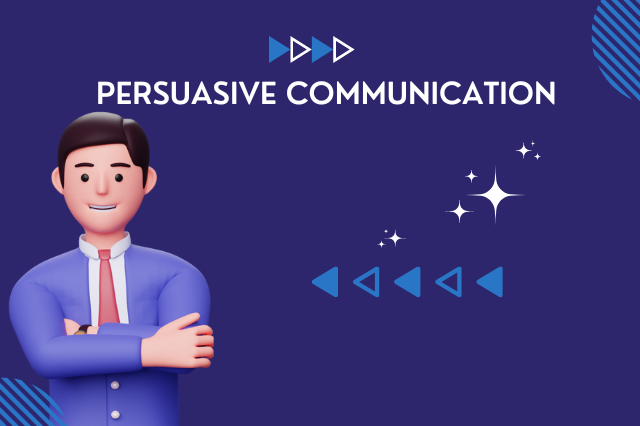Communication is the key to everything. Our attempt to achieve success in life and in our careers significantly depends on how we communicate. In professional situations, a CEO or a student, both have the challenge to come out with a victory. The only way to make an impact is to wear a Persuasive hat. Here is a small article for this.
In Group Discussions, Negotiations and Job Interviews, we need to make a strong impact. The process is always of bargaining and assertions in such tasks. Group Discussion is a collective effort for collective knowledge but we need to grab a chance to speak and make a strong point as well. In a Negotiation, it is crucial to put the best bet in bargaining. We have to convince the other party to take our opinion positively. It has to be a win-win for both. However, Assertive Persuasion is preferred to Aggressive persuasion and there has to be unending control over the intentions and words we frame.
Persuasive communication is the art of using language and other communication techniques to influence others' attitudes, beliefs, and behaviours. The goal of persuasive communication is to get the audience to adopt a particular position or take a specific action. Persuasive communication can be used in various contexts, from marketing and advertising to politics and public policy.
Aspects of Persuasive Communication:
- Audience Analysis: To be effective, persuasive communication must be tailored to the specific needs and desires of the audience. An understanding of the audience's beliefs, values, and attitudes is essential for crafting persuasive messages that will resonate with them. You can see the full form of the AUDIENCE acronym on the web to see how detailed audience analysis can be.
- Credibility: Persuasive communication is most effective when the speaker or communicator is perceived as credible and trustworthy. This can be achieved by demonstrating expertise in the subject matter, providing evidence to support claims, and using language that is clear and concise.
- Emotional Appeals: Persuasive communication often relies on emotional appeals to engage the audience and create a sense of urgency or importance. Emotional appeals can be effective when used in moderation and are based on understanding the audience's values and beliefs.
- Logical Appeals: Persuasive communication also relies on logical appeals to demonstrate the validity of an argument or position. This can be achieved through the use of evidence, statistics, and logical reasoning.
- Call to Action: Persuasive communication must include a call to action that encourages the audience to take a specific action or adopt a particular position.
How to do good in persuasive communication in a professional context:
- Understand Your Audience: To be effective in persuasive communication, it is essential to understand the audience's needs, values, and attitudes. Take the time to research your audience and tailor your message to their specific interests.
- Be Credible: Establishing credibility is critical in persuasive communication. Ensure that your arguments are backed up by facts and evidence, and use language that is clear and concise.
- Use Emotional Appeals Wisely: Emotional appeals can be a powerful tool in persuasive communication, but they should be used in moderation and based on an understanding of the audience's values and beliefs.
- Use Logical Appeals: Logical appeals can help demonstrate the validity of your arguments and position. Use evidence, statistics, and logical reasoning to support your claims.
Provide a Call to Action: Persuasive communication must include a call to action that encourages the audience to take a specific action or adopt a particular position. Be clear about what you want the audience to do and provide them with a clear path to follow.
Various strategies of persuasive communication:
- Storytelling: Using stories to illustrate your point can be a powerful tool in persuasive communication. Stories engage the audience and create an emotional connection, making it more likely that they will remember and act on your message.
- Social Proof: People are often influenced by the actions of others. Using social proof, such as testimonials or case studies, can be an effective way to persuade the audience to adopt a particular position or take a specific action.
- Authority: People are more likely to be influenced by those who are perceived as experts or authorities in a particular field. Use your expertise and credentials to establish credibility and influence the audience.
- Scarcity: People are often motivated by the fear of missing out on something valuable. Using scarcity, such as limited-time offers or exclusive access, can be an effective way to persuade the audience to take action. The lack of something creates a need and the audience is interested in the call to action.
- Humour: Humour can be a powerful tool in persuasive communication, as it can engage the audience and create a positive emotional connection. However, it is important to use humour wisely and in a way that is appropriate for the audience and the context.
In conclusion, persuasive communication is an essential skill in the professional world. By understanding the aspects and strategies, we can be strong and impactful in our communication.
Additional Reading







